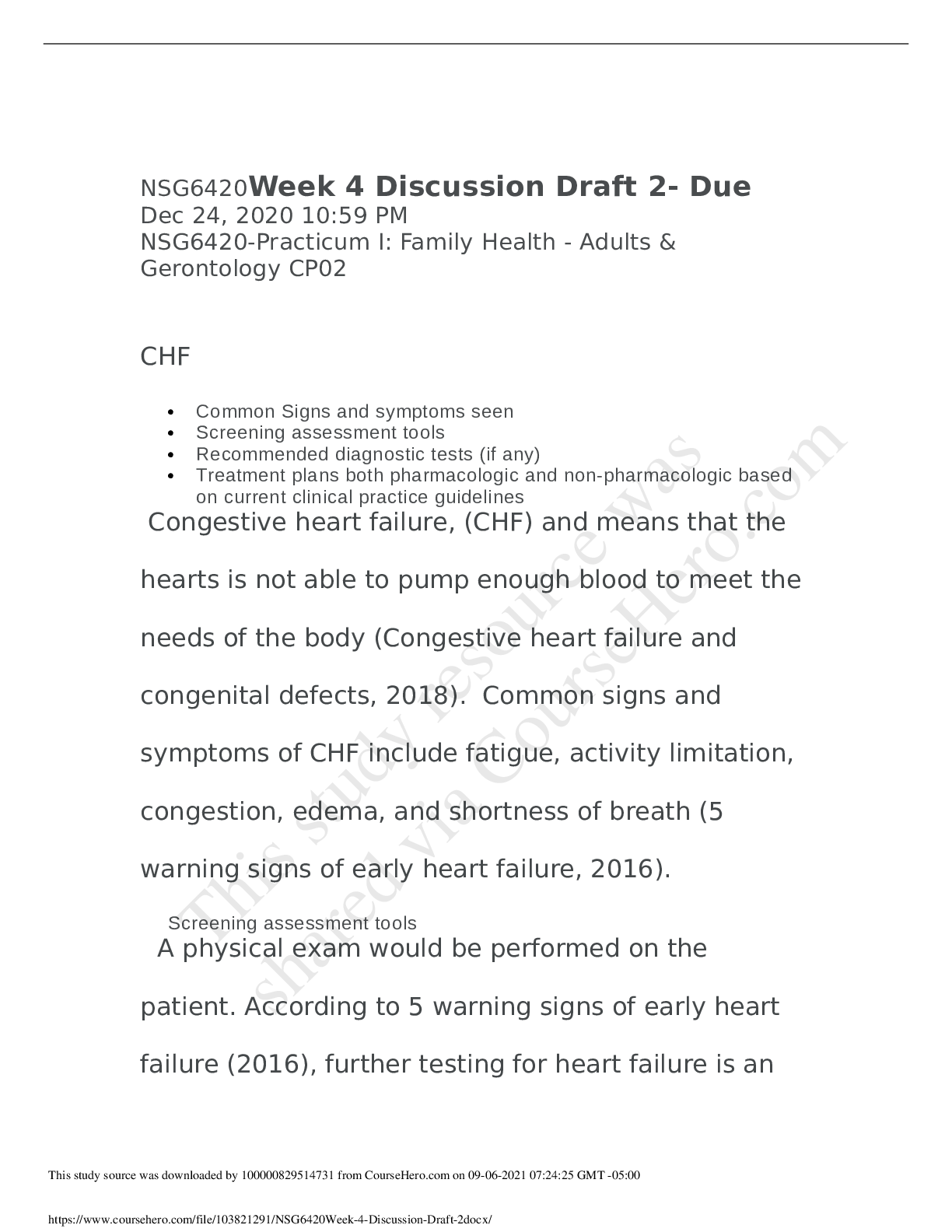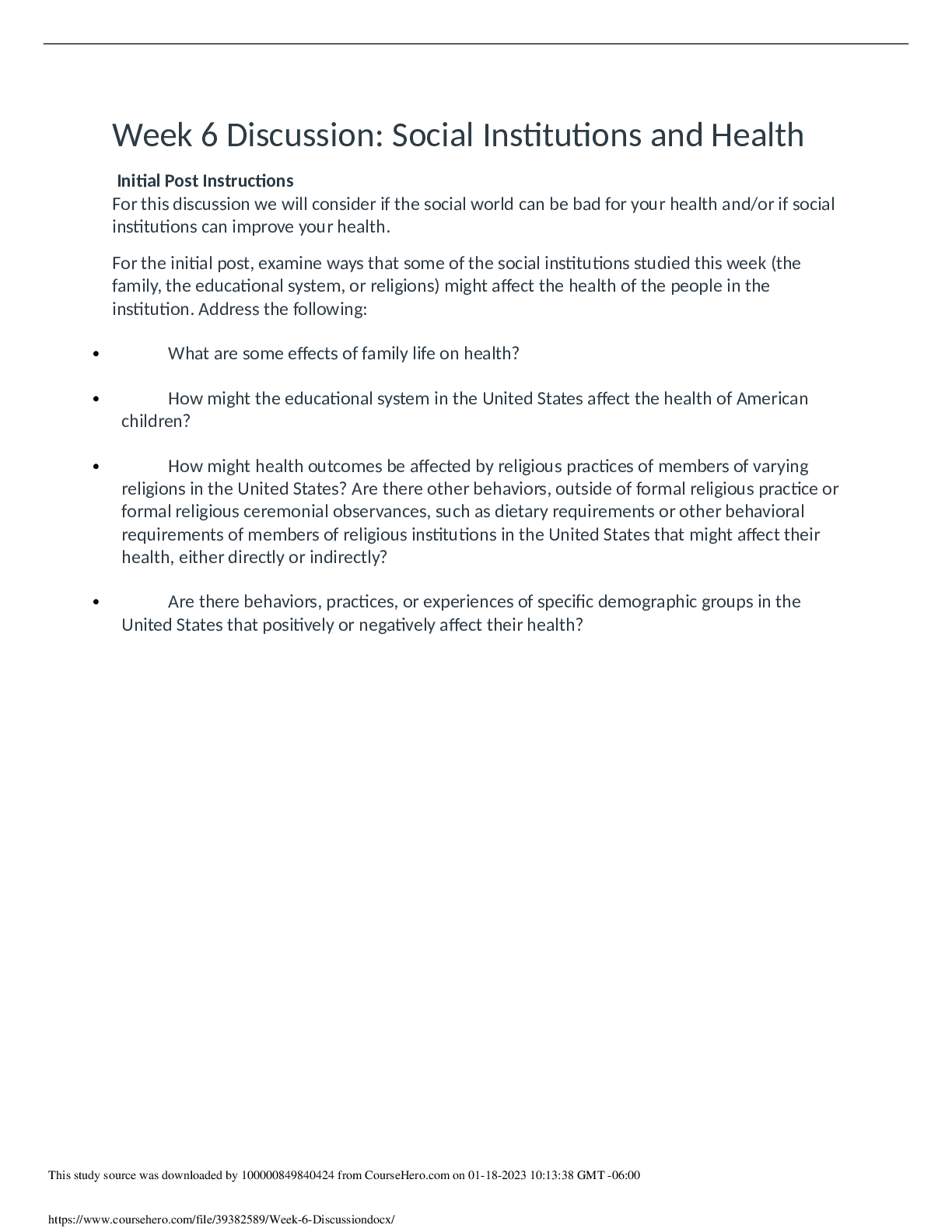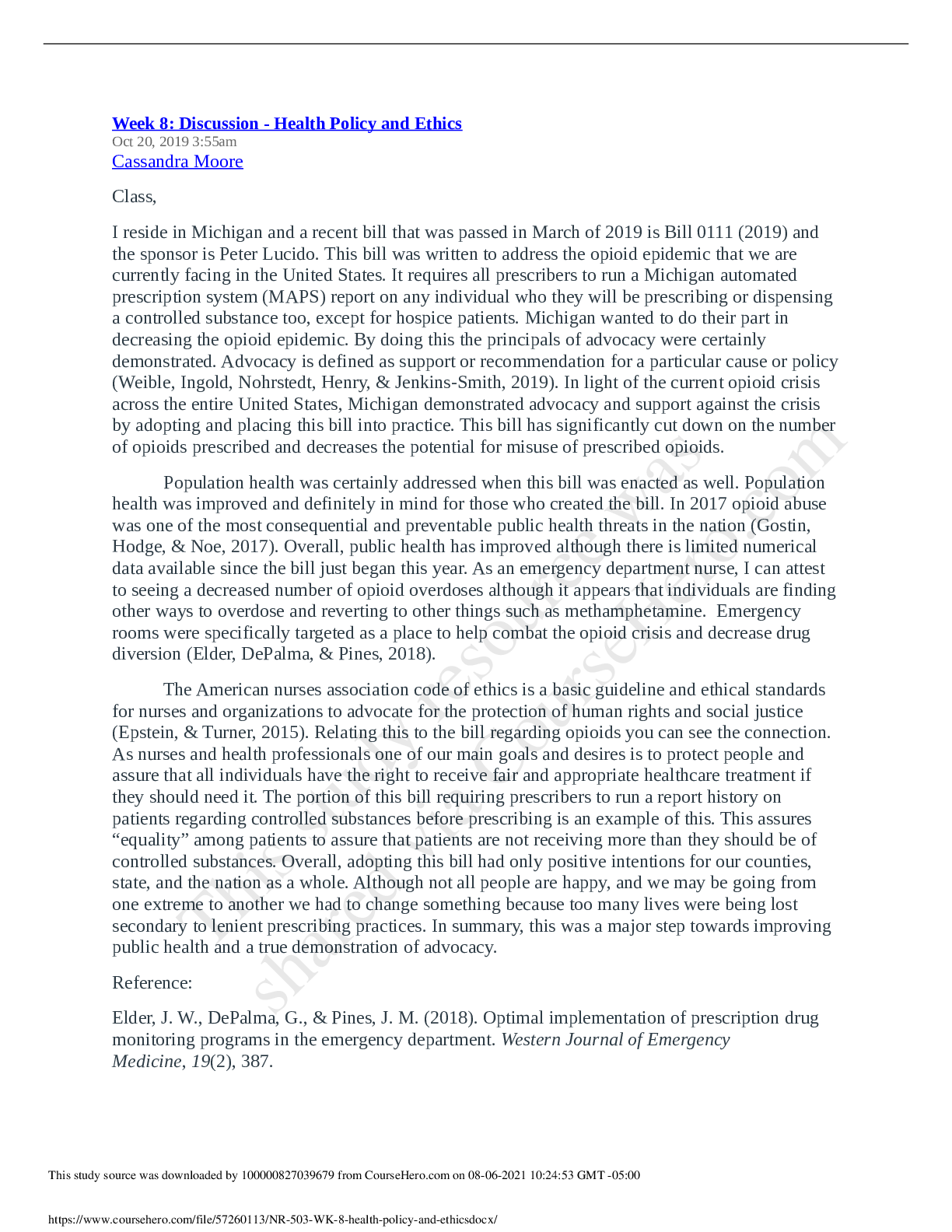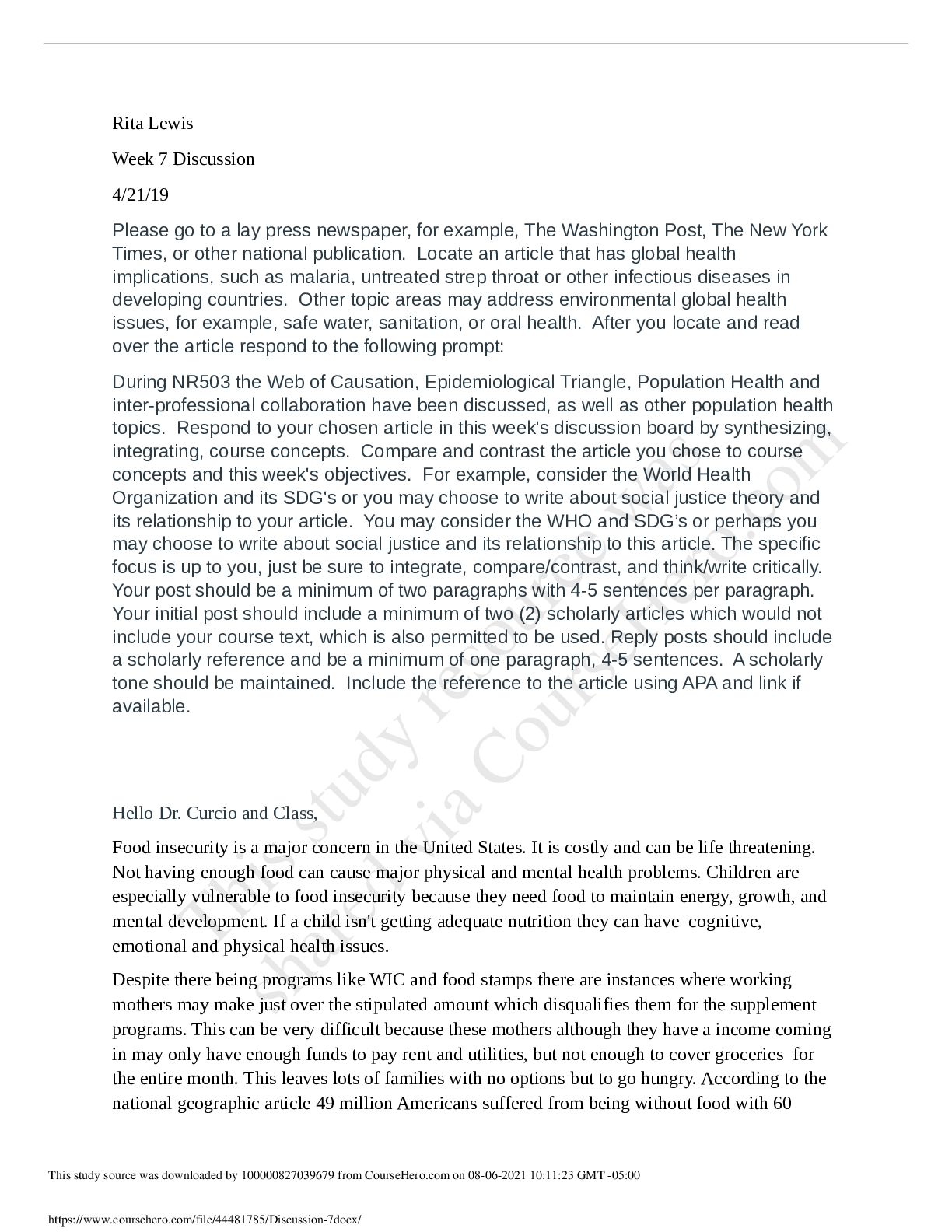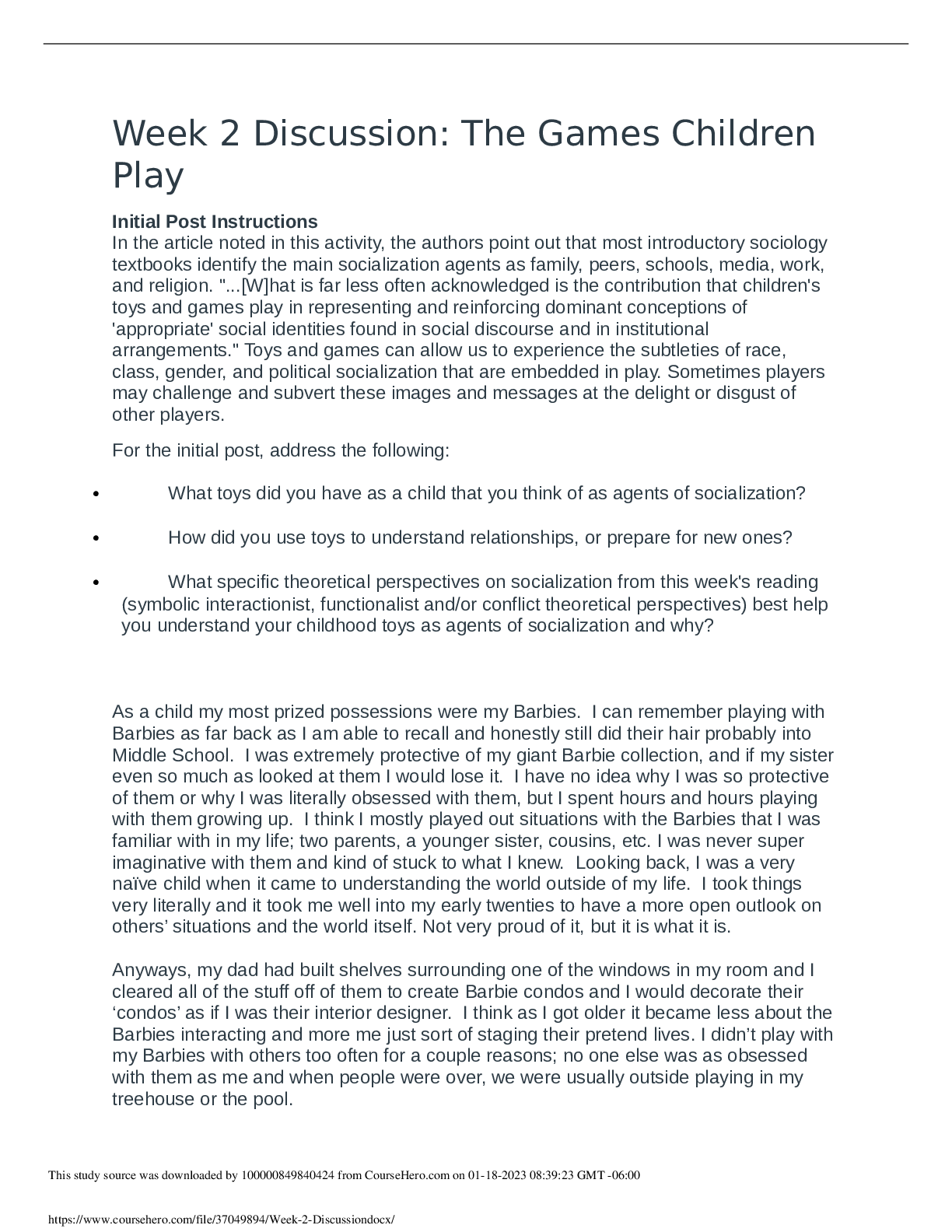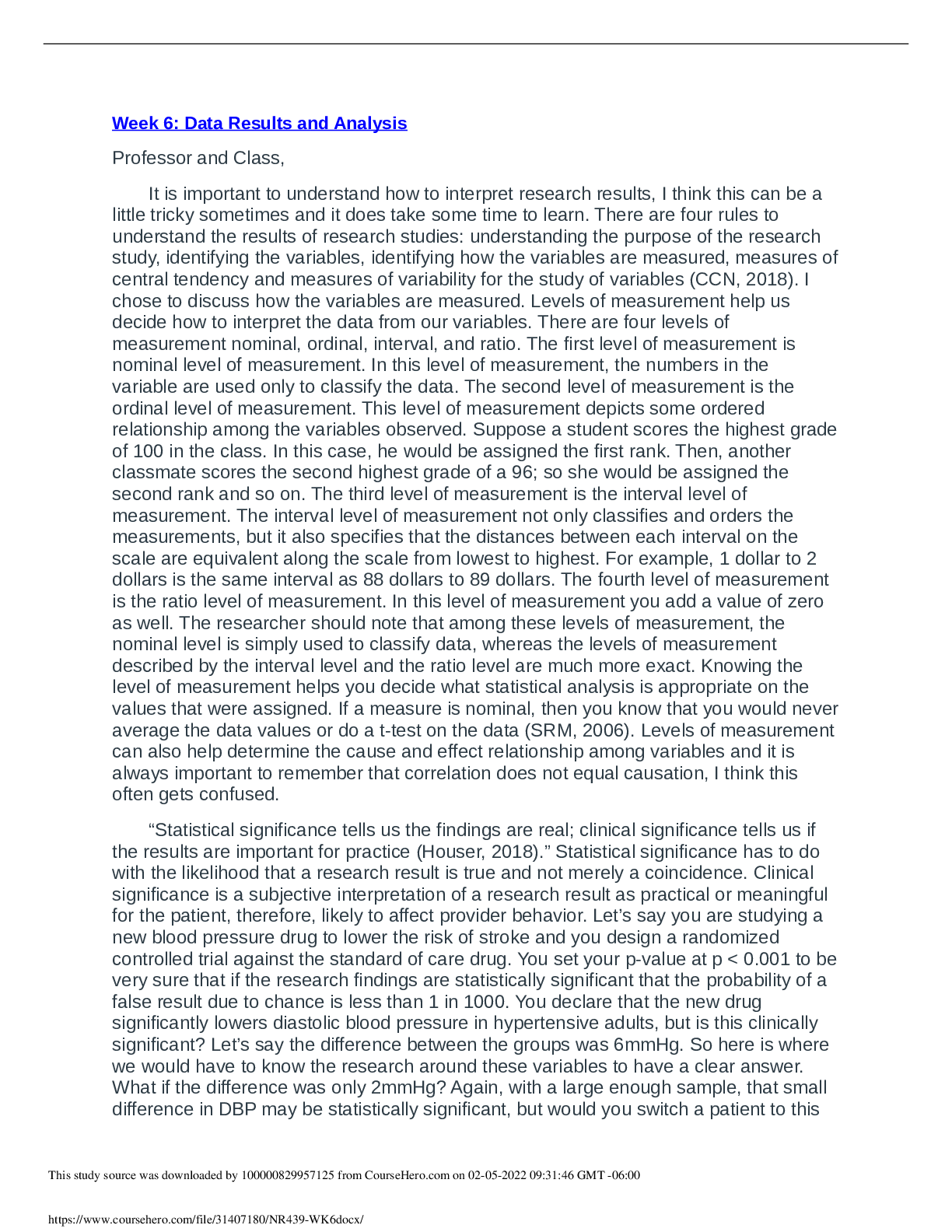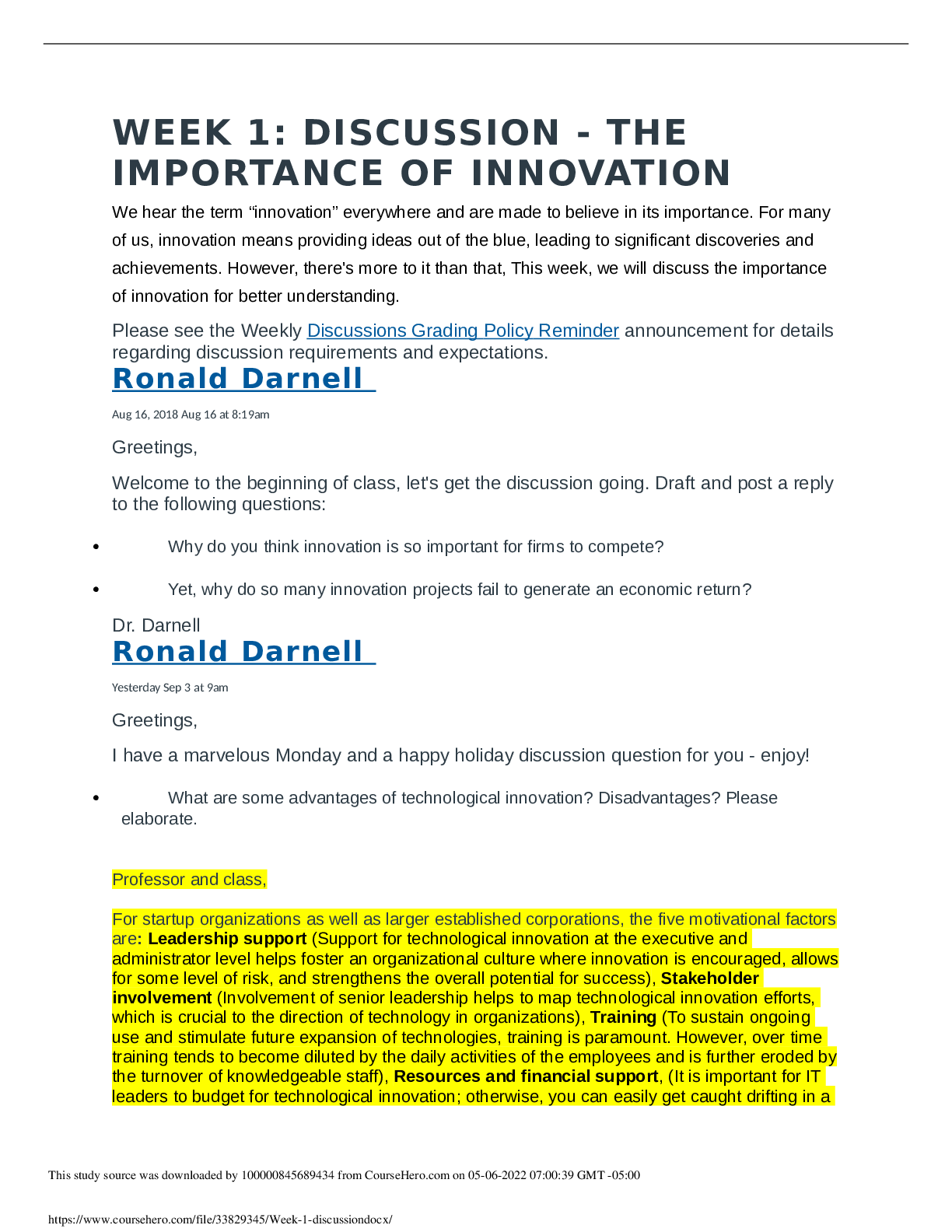*NURSING > DISCUSSION POST > NR 532 Week 6 Graded Discussion 1 – Information Management in Healthcare (All)
NR 532 Week 6 Graded Discussion 1 – Information Management in Healthcare
Document Content and Description Below
Discuss one example where simulation technology could be beneficial for nursing or for patient care. Explain your rationale. In addition, discuss two strategies you could implement to ensure the con... fidentiality and protection of patient health information at your facility. Good afternoon Dr. Coleman and class, Using simulation technology in learning is gaining popularity and can be a very valuable learning tool. Human simulation learning is a method that allows students to develop, refine, and apply learned information, intervention and skills in a realistic simulated clinical situation. Simulated clinical situations with specific learning goals and objectives are used to help students gain experience, learn, and promote competency requirements for real situations. This is done without fear of harm to a live patient and promotes patient safety and better outcomes. The student has the opportunities to practice scenarios and apply knowledge and procedures in clinical situations within a safe, supervised environment without posing a risk to a patient (Durham, & Arden, 2018). Simulation technology is a beneficial tool used to improve patient care. For example, at my facility, we use simulation for BLS/ACLS training and certification. I find this learning tool very effective and is a way to learn and each person’s own pace without the fear of peer ridicule or harm to actual patients. A study was done to evaluate the effect of simulation-based learning using a standard set of simulated clinical situations for nursing students. The clinical thinking, nursing skills and decision-making abilities were evaluated. 18 controlled trials (4 randomized and 14 nonrandomized designs), with a total of 1326 nursing students was conducted. The conclusion was that simulation-based learning appeared to a positive effect on the cognitive, affective, and psychomotor skills compared to traditional classroom learning and labs. These results suggest that simulation-based learning has a positive impact on self-efficacy and learning, motivation, and skill improvement ( Oh, Jeon, & Koh, 2015). In reference to discussing strategies used that protect patient confidentiality and information, the use of and evolving technology available to make patient care and communication more efficient, faster and accurate has opened the door to many privacy concerns. The Health Insurance Portability and Accountability Act (HIPAA) is used to govern issues related to the security and privacy of any information about each patient. As a nurse leader, to ensure that policies regarding protecting the patient’s confidential information are well known and implemented by all nursing staff and co-workers. It is the responsibility of every nurse as well as other care providers to use tools and interventions that are in place to ensure each patient’s information is protected. As new technology is developed and used for information sharing, protecting confidential information and patient privacy is more challenging (Roussel et al., 2016). Patient confidentiality and privacy concerns go far beyond just being aware of where you discuss certain information at work and ensuring no names or SS#s are in emails. With the use ofelectronic medical records and the transferring of information over computers ect… more action is required to protect it. At my facility, using a card with a chip that identifies each staff member has to be in place before patient information can be viewed or medications can be given. Not everyone has the same access to patient information and not all parts of the chart can be shared or copied. There is encryption software required for information sharing and emails ect… We only use the first initial of the last name and last 4 numbers of a SS# when sharing or discussing information away from the bedside. No Full names are in view at the unit information desk, and consent has to be obtained from each patient before the name and room number can be confirmed at the front desk by visitors. Although every patient has a right to their own information, an appointment has to be made with the patient information department, appropriate identification documents then a signed consent before any information is given to the patient from the records. Even with all of these strategies used, patient confidentiality and privacy is still a concern and information breaks continue to happen. Being able to effectively protect a patient’s privacy and confidentiality will always be a concern and must continue to be every nurse’s priority when information is being shared whether it be on paper, verbally or electronically. Thanks, Vickie Durham, C. F., & Arden, K. (2018). Enhancing Patient Safety in Nursing Education Through Patient Simulation. Retrieved from https://www.ncbi.nlm.nih.gov/books/NBK2628/ Oh, P. J., Jeon, K. D., & Koh, M. S. (2015). The effects of simulation-based learning using standardized patients in nursing students: A meta-analysis. Nurse education today, 35(5), e6-e15. Roussel, L., Thomas, P., & Harris, J. (2016). Management and leadership for nurse administrators (7th ed.). Burlington, MA: Jones & Bartlett Learning. Most of us believe that our medical and other health information is private and should be protected, and we want to know who has this information. The Health Information Portability and Accountability Act (HIPAA), a Federal law, gives you rights over your health information and sets rules and limits on who can look at and receive your health information. HIPAA applies to all forms of individuals' protected health information, whether electronic, written, or oral (U.S. Department of Health & Human Services, n.d.). There are simple steps healthcare employees can take to ensure the privacy of patients. This may include asking if it’s ok to speak in front of family members, asking for a contact person that it is appropriate to disclose information to. Advance directives are also a form of proxy confirmation. An advance directive expresses a person’s preferences for their future care if they are no longer able to make decisions for themselves (Rolnick, Asch, & Halpern, 2017). In primary care we encourage patients to have a plan in place. We use the Five Wishes brochure to encourage discussions and facilitate the process which can be uncomfortable for some patients. Other policies to protect patient information include securing or locking computers when walking away, secure shredding or other disposal of printed patient information and having aradio playing in the background to help prevent the incidental disclosure of information in waiting rooms. Rolnick, J. A., Asch, D. A., & Halpern, S. D. (2017, Jun 1). Delegalizing advance directivesFacilitating advance care planning. New England Journal of Medicine, 376(22), 2105-2107. doi:10.1056/NEJMp1700502 U.S. Department of Health & Human Services. (n.d.). Health information privacy. Retrieved from HHS.gov: https://www.hhs.gov/hipaa/index.html Professor Coleman and Cass, Simulation technology is a luxury in the world of nursing today. Even when I attended nursing school 10 years ago, the manikins and simulation equipment allowed for us to practice skills without the fear of harming an actual patient. Shin, Park, and Kim (2015) write that there were significant post intervention improvements in various domains for nursing students who received simulation education versus those who received the same education but no simulation. At my hospital, we use something called Heart code. The staff take the written portion of the advanced cardiac life support (ACLS), basic life support (BLS), and pediatric advanced life support (PALS), then they take the hands-on portion using a manikin and a specially outfitted code cart with a cardiac rhythm simulator. The monitor on the code cart can be adjusted to show lethal rhythms for staff to identify. Additionally, a large university in my local area has a technology center that focuses solely on simulation exercises. These simulations range from acute stroke with interactive stroke training using virtual patient simulation to advanced trauma care for nurses and advanced trauma life support certification (camls.org, 2018). Other simulations include airway management for dentists, fundamentals of simulation operations and obstetrical simulation course, detailing emergencies and catastrophes to name a few (camls, org, 2018). My dream is to someday send my staff through the advanced trauma life support certification course, but at $950/student, I might be waiting awhile for that dream to come true. Beck [Show More]
Last updated: 1 year ago
Preview 1 out of 22 pages
Instant download

Buy this document to get the full access instantly
Instant Download Access after purchase
Add to cartInstant download
Reviews( 0 )
Document information
Connected school, study & course
About the document
Uploaded On
Aug 02, 2021
Number of pages
22
Written in
Additional information
This document has been written for:
Uploaded
Aug 02, 2021
Downloads
0
Views
61
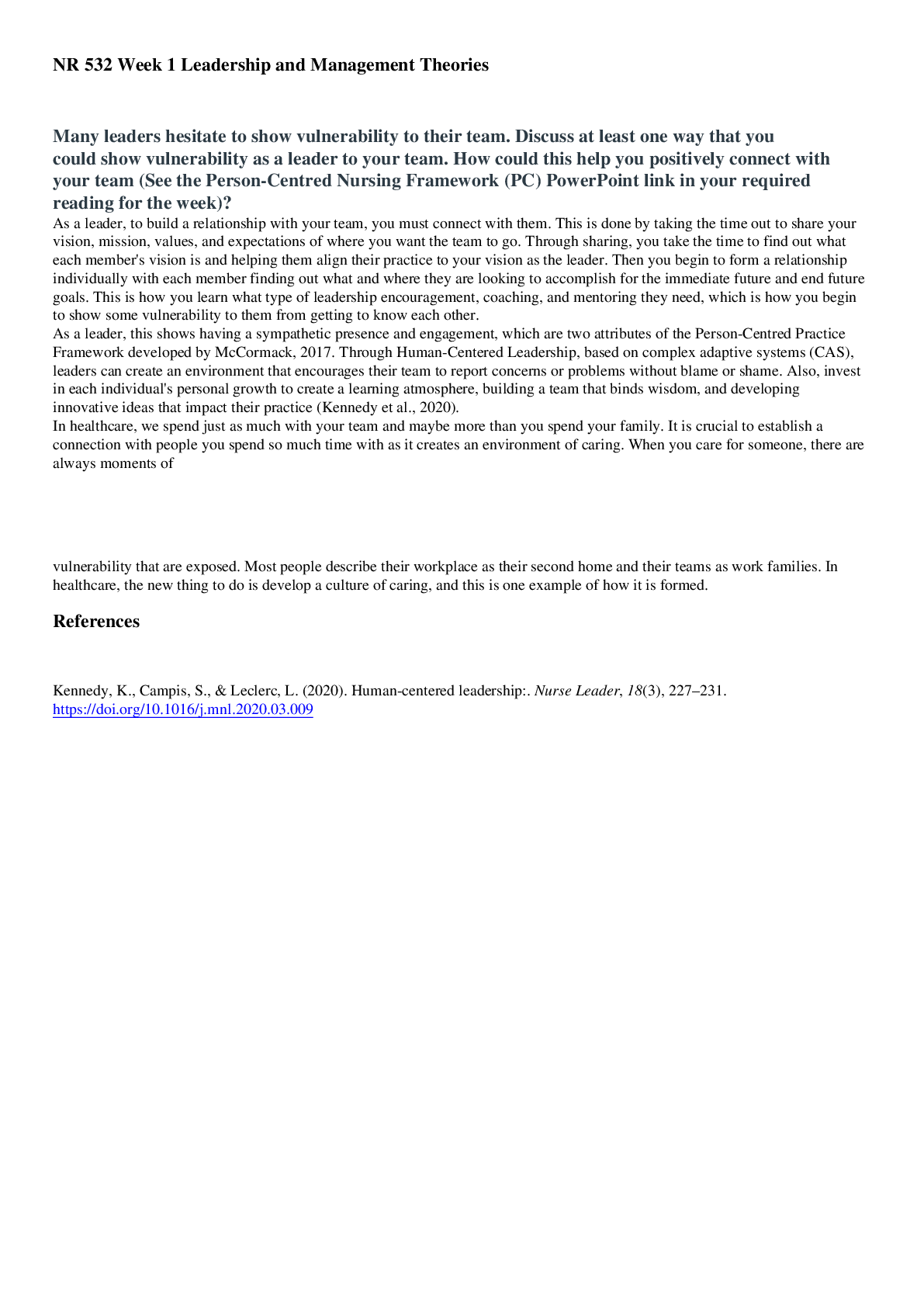

U.png)
